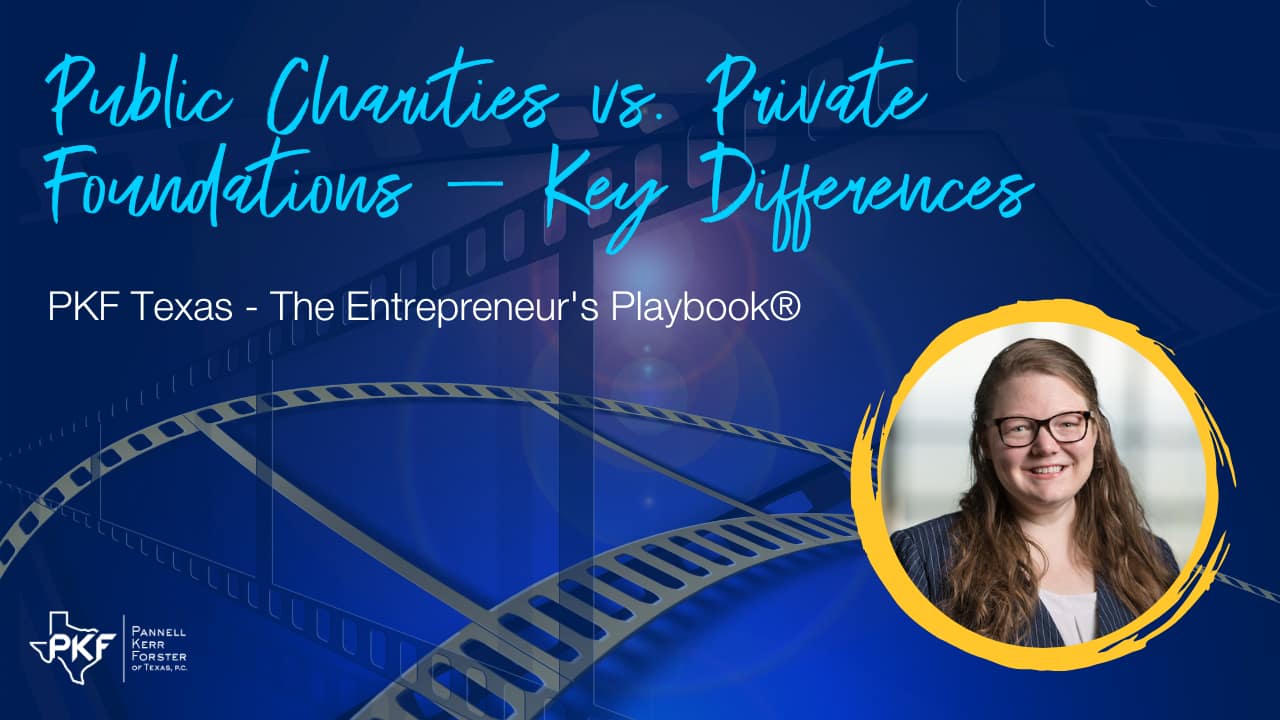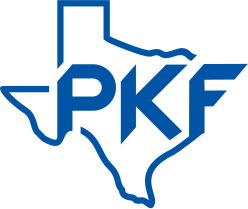Public Charities vs. Private Foundations – Key Differences

The 501(c)(3) not-for-profit classification is a wide umbrella many organizations fall under. Even though not-for-profits can be classified the same, there are some key differences. In this episode of PKF Texas – The Entrepreneur’s Playbook®, Tax Director Emily Smikal, CPA, discusses the differences between public charities and private foundations.
Jen: This is the PKF Texas – Entrepreneurs Playbook®. I’m Jen Lemanski and I’m back once again with Emily Smikal, one of our Approachable Advisors™ and the tax lead of our not-for-profit team here at PKF Texas. Emily, welcome back to the Playbook.
Emily: Thanks for having me, Jen.
The Differences
Jen: You know, so I know we advise a whole bunch of different types of not-for-profit organizations, different types of even 501(c)(3)s, right? I think two of the main ones are public charities and private foundations. Can you tell us a little bit about the differences between the two?
Emily: Yeah, you’re right, Jen. In the world of 501(c)(3) organizations, they can fall into one of two categories: public charities, private foundations. And the main distinction between the two is the amount of involvement from the public in these organizations.
So, a public charity gets most of their funds from the general public or governmental units, and they interact more with the public; a private foundation usually ran by either a family or a small group of individuals, and most of their funds come from that group.
On the other hand, private foundations are usually ran by a family or a small group of individuals, and most of their funds come from that small group, as well as investment income.
The Regulations for Private Foundations
Jen: Are there different rules and regulations for each type?
Emily: Yes, definitely. Because private foundations have less of that public scrutiny. They have more regulations put on them by the IRS than public charities do.
Jen: So, what are some of the restrictions that the private foundations have to deal with?
Emily: For example, the IRS requires that a private foundation distribute at least 5% of their assets every year, whether that’s through grants or through qualified operating expenses. There’s also a 1.39% excise tax on net investment income for private foundations. And private foundations also have some rules and regulations around how much voting stock they can own in a private company. And there’s also some rules around things like self-dealing, which deals with significant contributors and other interested persons of the organization.
Jen: So, 501(c)(3), that’s seemingly the same thing. How does the IRS determine if it’s a private foundation or a public charity?
Emily: Well, because a private foundation has more restrictions, that’s going to be the automatic designation that a 501(c)(3) is given, at first. If an organization wants to be treated as a public charity, then they kind of have that burden of proof to prove that they qualify as such, and they have to request that from the IRS. And there are tests that are used such as a public support test, and that’s something we can dive deeper into on another video.
Jen: Perfect. I think we’ll get you back to talk a little bit more about that.
Emily: I think that sounds good.
Jen: Awesome. All right. This has been another thought leadership production brought to you by PKF Texas – The Entrepreneur’s Playbook®. For more information about this and other not-for-profit topics, visit www.PKFTexas.com/Insights. Tune in next week for another chapter.
